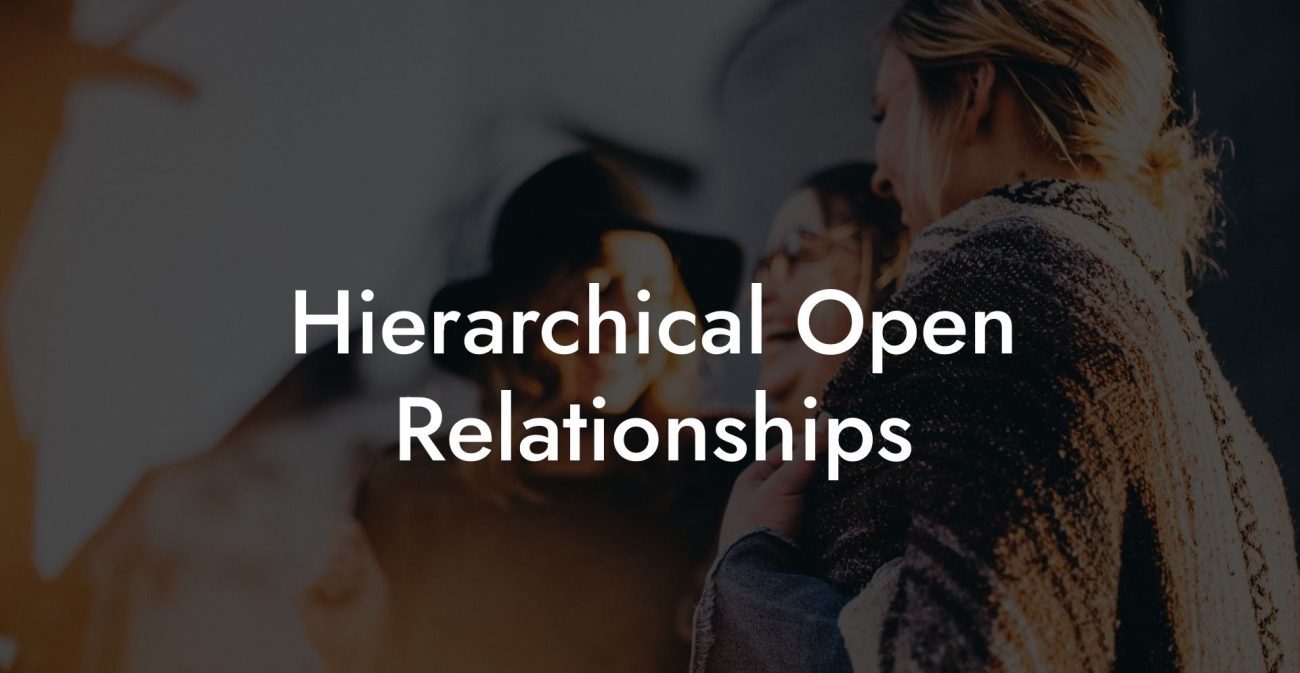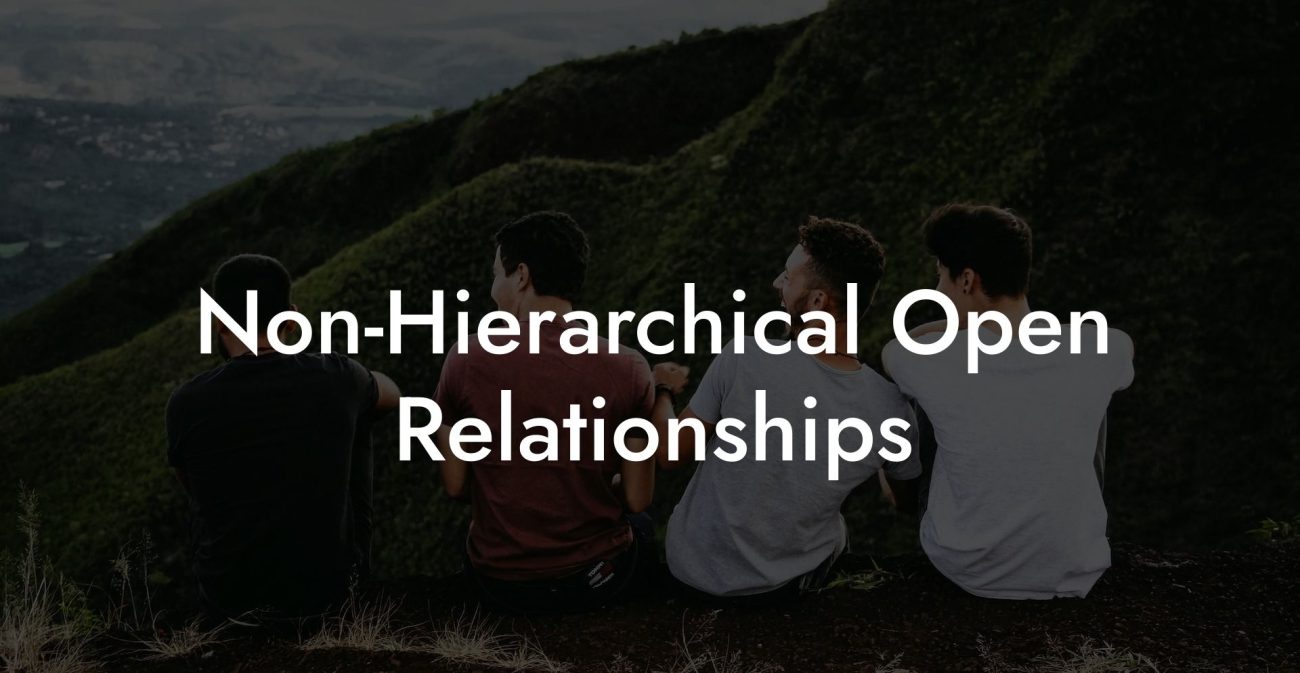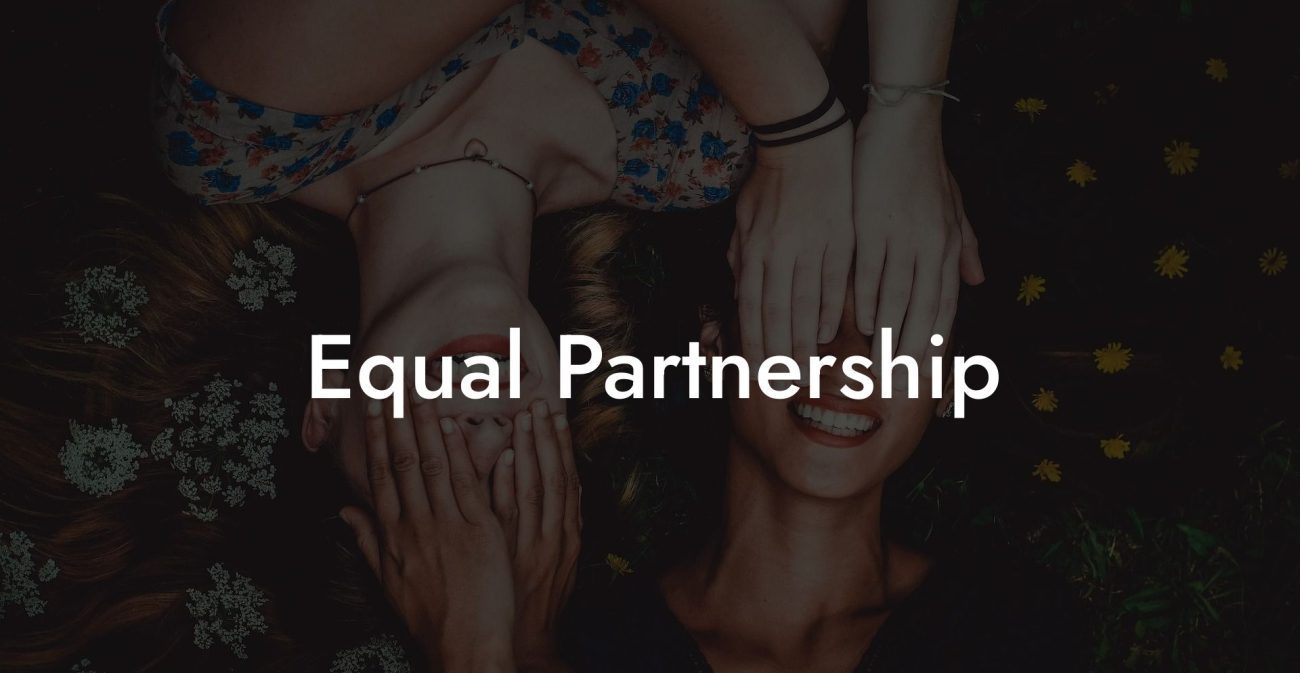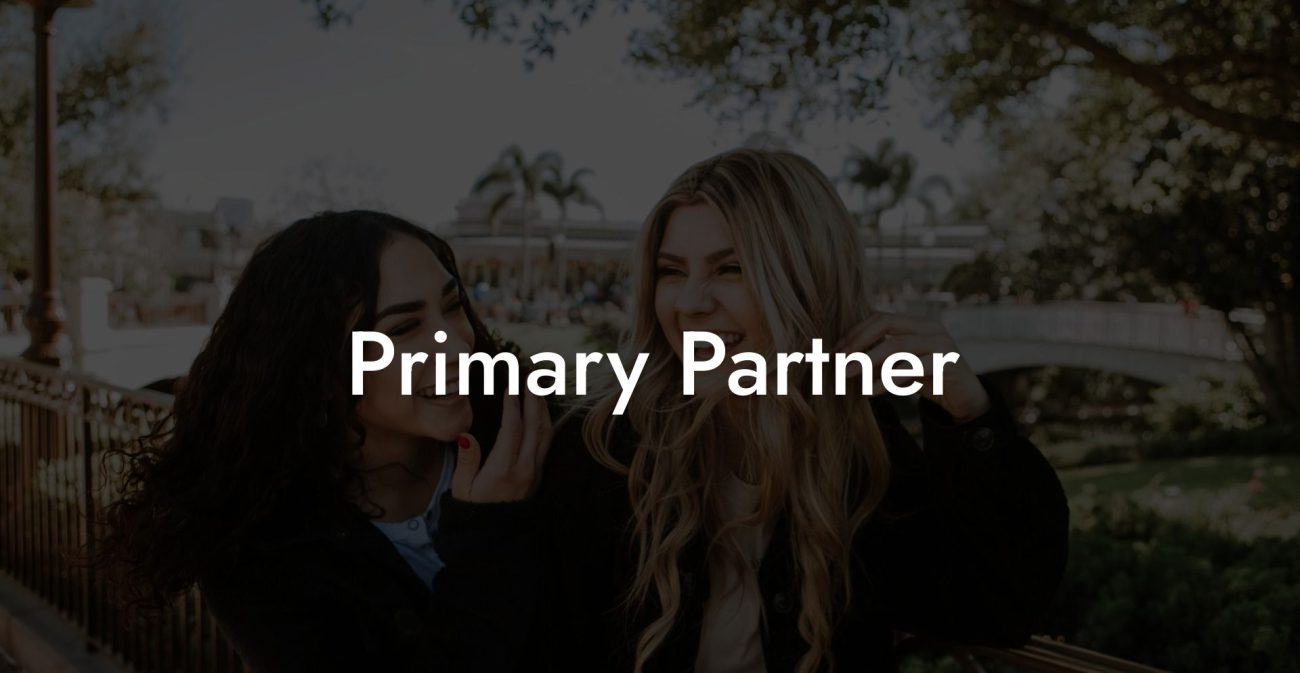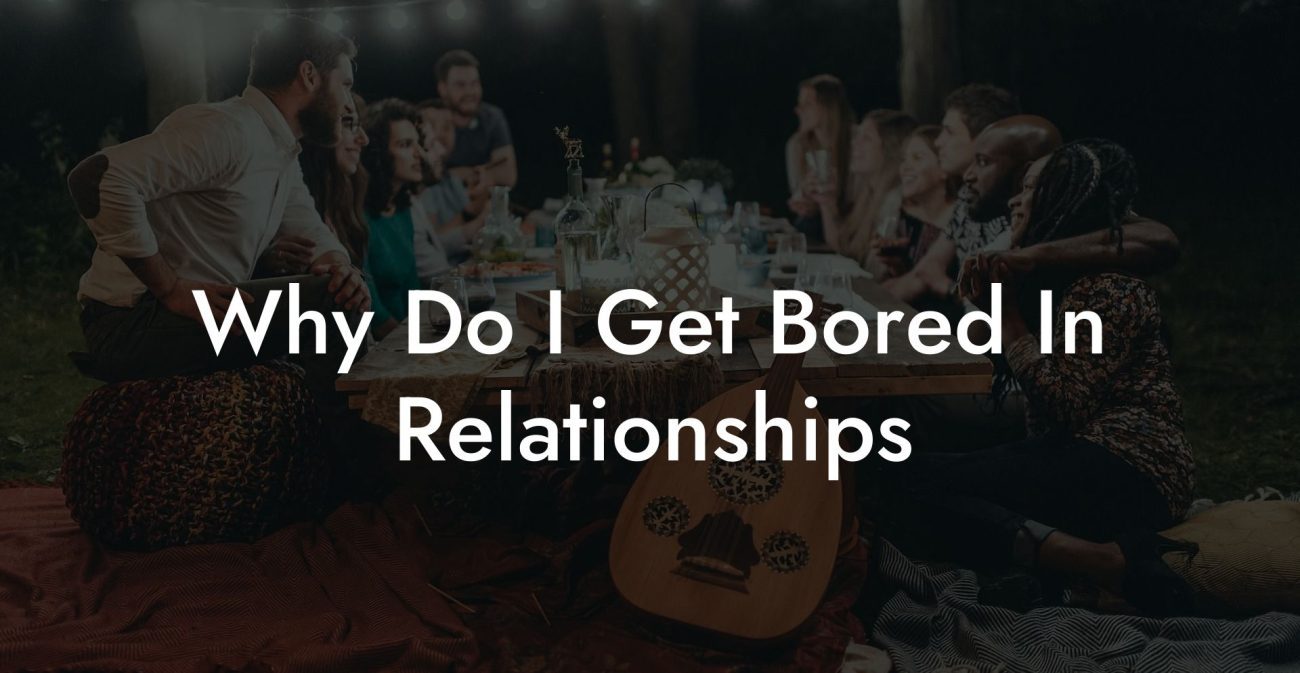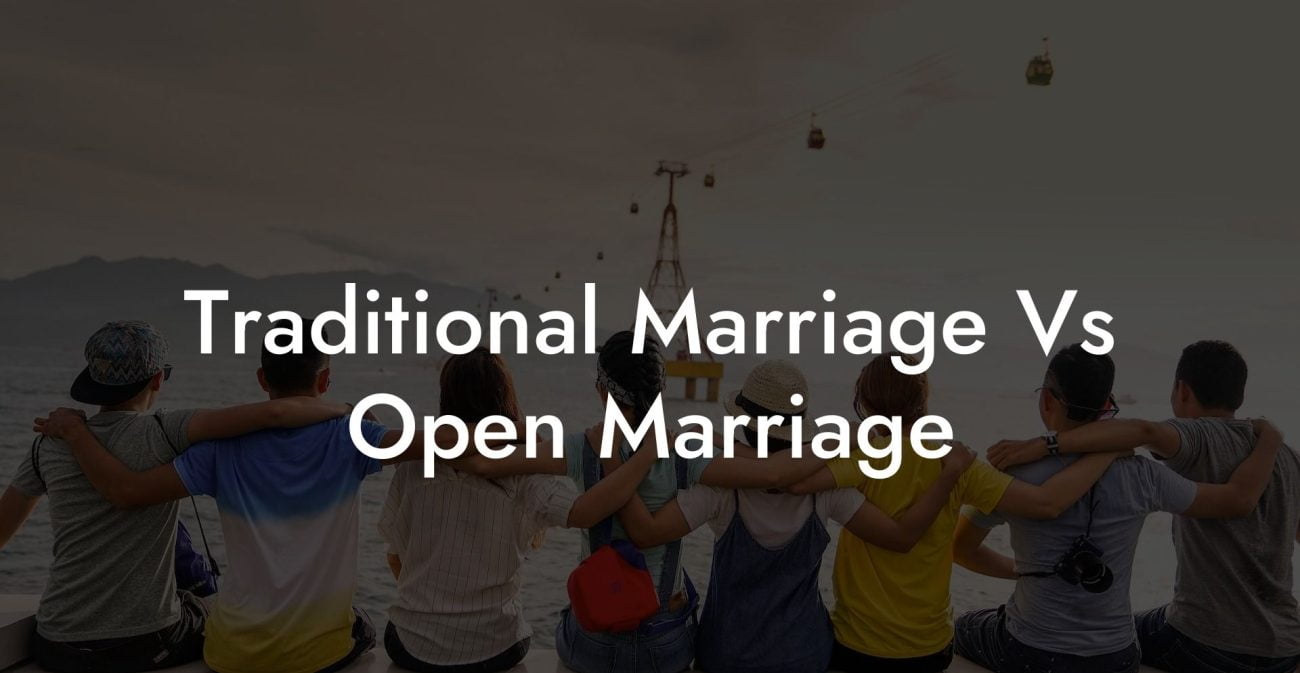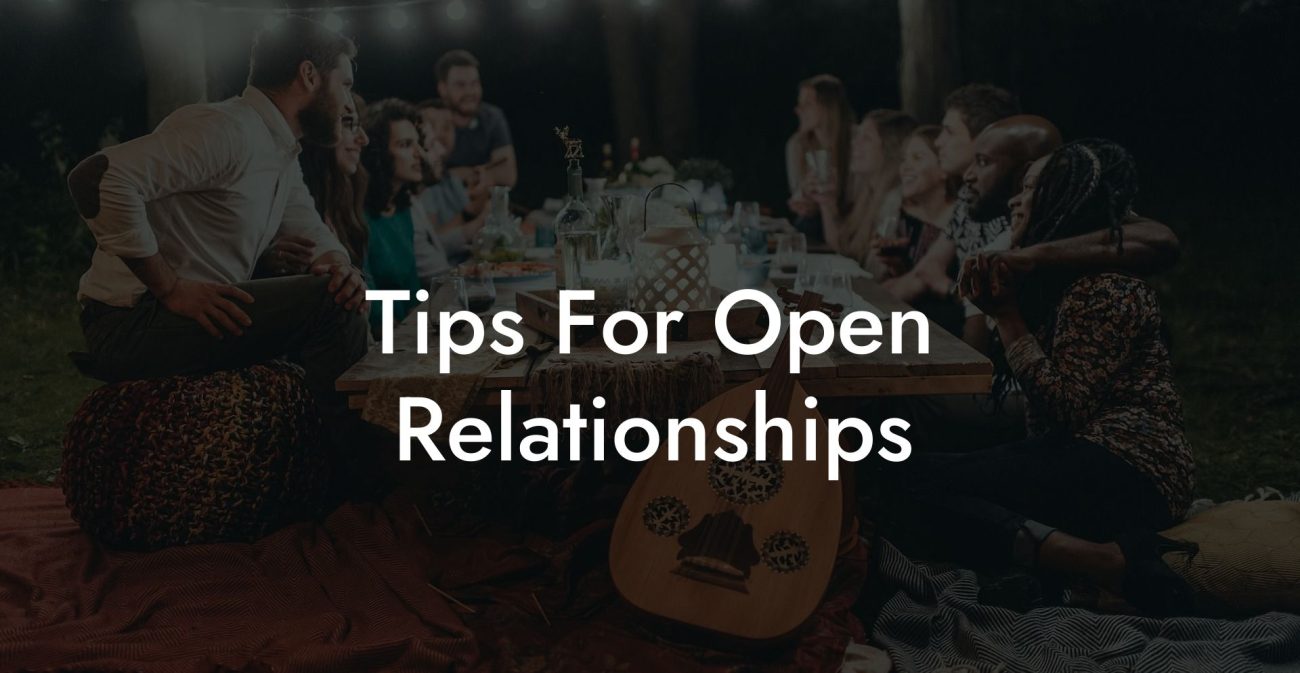Guide to Polyamory Terminology
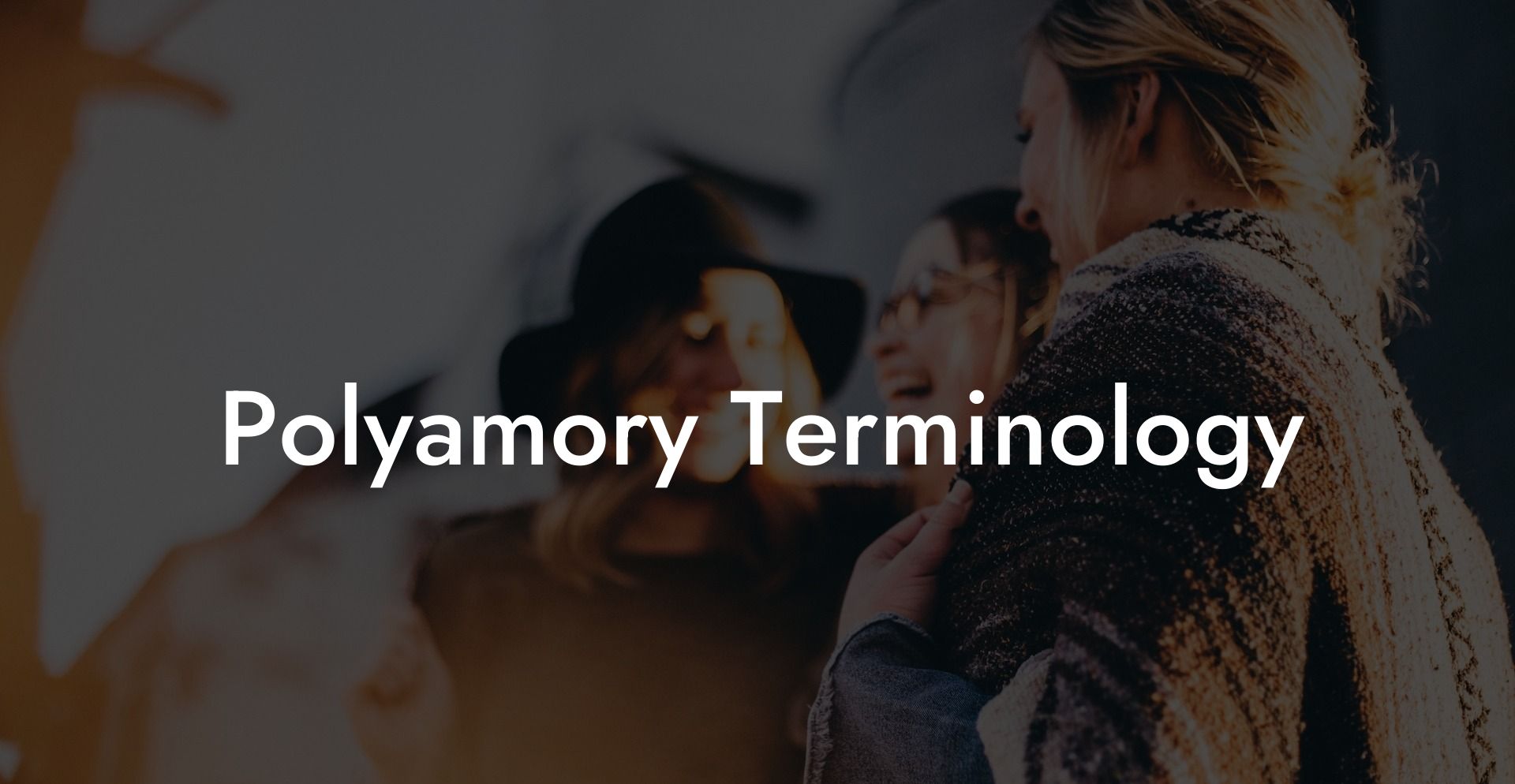
In this guide, we’ll break down common terms and phrases used in polyamory, delve into the historical and cultural evolution of this terminology, and explain why clear communication is essential in maintaining consensual, respectful, and fulfilling connections. Our goal is to provide you with both the definitions and the context behind each term, so you can confidently engage with the polyamorous community and cultivate a deeper understanding of ethical non-monogamy.
Quick Links to Useful Sections
- Understanding Polyamory Terminology
- What is Polyamory?
- Why Terminology Matters
- Common Terms in Polyamory
- Polyamory
- Ethical Non-Monogamy
- Open Relationship
- Primary, Secondary, and Tertiary Partners
- Hierarchy vs. Non-Hierarchy
- Metamour
- Compersion
- Relationship Anarchy
- Solo Poly
- Polyfidelity
- Polycule
- Triad, Quad, and Other Configurations
- Historical and Cultural Evolution of Polyamory Terminology
- Early Influences and the Emergence of Non-Monogamous Language
- Cultural Shifts and the Mainstreaming of Polyamory
- Why Language is Essential in Polyamorous Communities
- Creating a Shared Understanding
- Empowerment Through Terminology
- Challenges and Misunderstandings in Polyamory Terminology
- Common Misconceptions
- The Evolving Nature of Language
- Navigating Regional and Cultural Differences
- Practical Tips for Navigating Polyamory Terminology
- Educate Yourself Continuously
- Engage in Open Dialogue
- Create Your Own Glossary
- Be Patient and Open-Minded
- Real-Life Stories: How Polyamory Terminology Transformed Relationships
- Case Study: Sam’s Journey to Clarity
- Case Study: Alex and Jordan’s Shared Glossary
- Expert Insights: Perspectives on Polyamory Terminology
- Thought Leaders and Relationship Coaches
- Academic Perspectives
- FAQ: Your Polyamory Terminology Questions Answered
Understanding Polyamory Terminology
What is Polyamory?
Polyamory is the practice of engaging in multiple consensual and emotionally intimate relationships simultaneously, where all parties are aware of and consent to the arrangement. Unlike casual dating or open relationships that may focus primarily on sexual encounters, polyamory emphasizes the importance of love, commitment, and connection across more than one relationship. The term itself is derived from the Greek word "poly," meaning many, and the Latin word "amor," meaning love.
Why Terminology Matters
Clear terminology is essential in polyamorous communities because it facilitates honest communication and sets expectations. By using precise language, individuals can better articulate their needs, boundaries, and desires. This shared vocabulary helps reduce misunderstandings, dispels myths, and creates a sense of belonging among people who might otherwise feel isolated by societal norms that only recognize monogamous relationships.
For Gen-Z and millennial audiences, who often value inclusivity and open dialogue, understanding the language of polyamory is a key step towards embracing diverse relationship models. Whether you’re discussing your relationship structure with friends, participating in online forums, or simply trying to understand your own experiences, this guide will help you navigate the rich tapestry of polyamory terminology.
Common Terms in Polyamory
Polyamory
At its core, polyamory refers to the practice of having multiple romantic relationships simultaneously, with the informed consent of everyone involved. It emphasizes honesty, transparency, and mutual respect, challenging the traditional view that love is a finite resource.
Ethical Non-Monogamy
Ethical non-monogamy is an umbrella term that encompasses various forms of consensual non-monogamous relationships, including polyamory, open relationships, swinging, and relationship anarchy. The term “ethical” underscores the importance of consent, clear communication, and respect among all participants.
Open Relationship
An open relationship is a type of non-monogamous arrangement where a couple agrees to have sexual encounters or relationships outside of their primary partnership. Unlike polyamory, which typically emphasizes multiple loving relationships, open relationships might focus more on sexual exploration while maintaining a primary bond.
Primary, Secondary, and Tertiary Partners
In many polyamorous relationships, partners are categorized by levels of priority. A primary partner is usually someone with whom you share significant commitments such as living arrangements, finances, or parenting responsibilities. A secondary partner may not share the same level of integration into daily life but still holds a meaningful, emotional, or physical connection with you. Some people even refer to tertiary or other levels when describing relationships that are less central but still important.
Hierarchy vs. Non-Hierarchy
Polyamorous relationships can be structured hierarchically or non-hierarchically. In a hierarchical arrangement, partners are assigned different levels of priority, often with a primary partner at the top. In contrast, non-hierarchical polyamory rejects this ranking, instead treating all relationships as equally valuable. The choice between these structures depends on the needs and values of those involved.
Metamour
A metamour is the term used to describe the partner of your partner, essentially, your partner’s other partner. Understanding and establishing good communication with your metamours can be a critical part of maintaining harmony and minimizing jealousy in polyamorous networks.
Compersion
Compersion is often described as the opposite of jealousy. It refers to the feeling of joy one experiences when witnessing a partner’s happiness with another person. This term is central to polyamory because it encapsulates the emotional shift from feeling possessive to genuinely celebrating the fulfillment of one’s partner.
Relationship Anarchy
relationship anarchy is a philosophy that challenges traditional relationship norms and hierarchies. Adherents reject societal expectations around romantic partnerships, choosing instead to design their relationships based solely on personal values, needs, and mutual agreements. This approach emphasizes autonomy, freedom, and the rejection of labels.
Solo Poly
Solo polyamory is the practice of engaging in multiple relationships while prioritizing personal independence and autonomy. Individuals who identify as solo poly typically do not seek a primary partnership or cohabitation, instead focusing on maintaining their individuality while enjoying the benefits of multiple connections.
Polyfidelity
Polyfidelity is a form of polyamory where all partners agree to be sexually and romantically exclusive within their defined group. Although the group itself is non-monogamous with respect to outsiders, members do not engage in additional relationships outside of the established network. This structure offers the benefits of multiple loving relationships while maintaining a sense of exclusivity within the group.
Polycule
A polycule is a visual or conceptual representation of the network of relationships within a polyamorous group. Much like a molecule in chemistry, where atoms are connected by bonds, a polycule maps out the connections between various partners. It can help individuals understand and navigate the complexities of their relational network.
Triad, Quad, and Other Configurations
Polyamorous relationships can take many forms based on the number of people involved. A triad involves three people in a relationship, a quad involves four, and larger groups can be structured in various configurations. These terms help individuals describe the size and structure of their relationship networks.
Historical and Cultural Evolution of Polyamory Terminology
Early Influences and the Emergence of Non-Monogamous Language
The language of polyamory has evolved over time, influenced by social movements, academic Data & Research, and community activism. In the 1960s and 1970s, as sexual liberation movements began to challenge traditional norms, alternative relationship models started to gain attention. Early non-monogamous communities developed their own lexicon to articulate their experiences and needs.
As the internet grew in the 1990s and 2000s, online communities further refined and popularized polyamory terminology. Blogs, forums, and social media platforms became spaces where individuals could share personal stories, debate definitions, and collectively build a vocabulary that reflected their lived experiences.
Cultural Shifts and the Mainstreaming of Polyamory
In recent years, polyamory has moved from the fringes to a more visible position in mainstream culture. Television shows, podcasts, and academic studies have brought non-monogamous relationships into public discourse, necessitating clearer definitions and broader understanding. As a result, terms that were once confined to niche communities are now part of everyday conversations about love and relationships.
This cultural evolution has also led to a more nuanced understanding of the different ways people form connections. Whether you subscribe to a hierarchical model or embrace relationship anarchy, the language you use can shape your interactions and help create more fulfilling partnerships.
Why Language is Essential in Polyamorous Communities
Creating a Shared Understanding
Language is a powerful tool for building community. When everyone uses the same terms to describe their experiences, it becomes easier to form connections, share insights, and support one another. A shared vocabulary fosters empathy and reduces the likelihood of miscommunication.
For many, learning polyamory terminology is not just an academic exercise, it’s a pathway to self-acceptance and validation. When you have the words to describe your feelings and experiences, you can more effectively articulate your needs and boundaries, both to yourself and to others.
Empowerment Through Terminology
Knowing and using polyamory terminology can be incredibly empowering. It allows individuals to claim their identity and assert their values in a world that often only recognizes monogamous relationships. By adopting these terms, you align yourself with a community that values honesty, consent, and the freedom to love in diverse ways.
Moreover, understanding the language of polyamory can help combat stigma. As more people become educated on these concepts, misconceptions are challenged, and a more inclusive narrative around love and relationships emerges.
Challenges and Misunderstandings in Polyamory Terminology
Common Misconceptions
Despite growing awareness, polyamory terminology is sometimes misunderstood by those outside the community. Terms like “compersion” or “metamour” can be confusing, and the nuances of hierarchical versus non-hierarchical relationships are often oversimplified in popular discourse.
These misconceptions can lead to stereotyping and marginalization. However, by educating yourself and others, you can help bridge the gap between different perspectives and promote a more accurate understanding of ethical non-monogamy.
The Evolving Nature of Language
It’s important to recognize that language is dynamic. The terms used in polyamory are constantly evolving as new experiences and insights emerge. What was once considered standard may be redefined or expanded upon as communities grow and change.
Embracing this fluidity means being open to learning and adapting your vocabulary over time. Engaging with current literature, online discussions, and community events can help you stay updated on emerging terminology and best practices.
Navigating Regional and Cultural Differences
Terminology can also vary by region and cultural context. What one community calls a “polycule” might be described differently elsewhere. These variations are a testament to the diversity of experiences within non-monogamous relationships, but they can also pose challenges for those trying to understand the full spectrum of polyamorous language.
Recognizing and respecting these differences is key. When engaging with others, ask for clarification if a term is unfamiliar, and be willing to share your own understanding in a non-judgmental way.
Practical Tips for Navigating Polyamory Terminology
Educate Yourself Continuously
The world of polyamory terminology is vast and ever-changing. Make a habit of reading books, blogs, and research articles on non-monogamy. Resources such as "The Ethical Slut" by Dossie Easton and Janet Hardy, and "More Than Two" by Franklin Veaux and Eve Rickert offer in-depth explorations of polyamorous concepts.
Podcasts and online forums can also be valuable sources of information, where you can hear firsthand accounts and ask questions in a supportive environment.
Engage in Open Dialogue
Don’t be afraid to ask questions or seek clarification from experienced members of the polyamorous community. Engaging in honest conversations about terminology can help clear up misunderstandings and deepen your understanding of the subject.
Whether you’re discussing these terms with a partner, a metamour, or within an online group, open dialogue is the key to mutual learning and growth.
Create Your Own Glossary
As you encounter new terms and definitions, consider creating your own glossary. This personal resource can help reinforce your learning and serve as a reference when discussing polyamory with others.
Over time, you may even find that your glossary evolves, reflecting the changing nature of your relationships and your growing understanding of the community.
Be Patient and Open-Minded
Learning new terminology can be challenging, especially when it involves complex emotional concepts. Be patient with yourself and others as you navigate this linguistic landscape. Embrace the opportunity to learn and grow, and recognize that every question you ask contributes to a more inclusive dialogue.
Real-Life Stories: How Polyamory Terminology Transformed Relationships
Case Study: Sam’s Journey to Clarity
Sam, a young professional new to the polyamorous scene, initially struggled to articulate his feelings and boundaries in his relationships. After immersing himself in polyamory literature and engaging in online discussions, he began to understand the nuances of terms like "compersion" and "metamour." This newfound clarity allowed him to express his needs more effectively, which in turn strengthened his connections and minimized misunderstandings.
Sam’s journey underscores the transformative power of language, by learning the correct terminology, he not only gained confidence in his relationships but also found a supportive community that validated his experiences.
Case Study: Alex and Jordan’s Shared Glossary
In a long-term polyamorous relationship, Alex and Jordan decided to create a shared glossary of terms to help navigate their complex network of relationships. By collaborating on definitions and discussing the nuances behind each term, they were able to align their expectations and improve communication within their polycule. This shared resource became a cornerstone of their relationship, fostering trust and ensuring that everyone was on the same page.
Their experience highlights how a collaborative approach to learning polyamory terminology can enhance mutual understanding and reduce conflict.
Expert Insights: Perspectives on Polyamory Terminology
Thought Leaders and Relationship Coaches
Relationship coaches and polyamory thought leaders emphasize that clear terminology is not just about semantics, it is a tool for empowerment. Experts note that when individuals understand and adopt the language of polyamory, they are better equipped to negotiate boundaries, express their desires, and foster trust among partners.
“Language shapes reality,” explains a well-known relationship coach. “By embracing the terminology of ethical non-monogamy, people can break free from the limiting narratives of traditional relationships and build connections that are truly reflective of their needs and values.”
Academic Perspectives
Researchers in the field of human sexuality have also contributed to the discourse on polyamory terminology. Studies have shown that the development of a shared vocabulary within non-monogamous communities correlates with higher relationship satisfaction and lower levels of conflict. Scholars argue that as language evolves, it provides a framework for understanding the emotional and social complexities inherent in polyamorous relationships.
This academic perspective reinforces the idea that knowledge and clarity in terminology are fundamental to creating healthy, transparent relationships.
FAQ: Your Polyamory Terminology Questions Answered
1. What does polyamory mean?
Polyamory is the practice of engaging in multiple consensual and emotionally intimate relationships simultaneously, with full transparency and respect for all involved parties.
2. What is ethical non-monogamy?
Ethical non-monogamy is an umbrella term that refers to any relationship style where individuals have multiple romantic or sexual partners, and all relationships are formed based on mutual consent, open communication, and respect.
3. What does the term metamour mean?
A metamour is the partner of your partner, essentially, someone who is connected to you indirectly through a shared relationship. Establishing good communication with metamours is often essential for managing feelings and setting boundaries.
4. Can you explain compersion?
Compersion is the feeling of joy or happiness when witnessing your partner’s fulfillment or pleasure with someone else. It is often described as the opposite of jealousy.
5. What is relationship anarchy?
Relationship anarchy is a philosophy that rejects traditional norms and hierarchies in relationships, advocating for the creation of personal, individualized connections based solely on mutual respect and personal values.
6. How do hierarchical and non-hierarchical polyamory differ?
In hierarchical polyamory, relationships are structured with different levels of priority (e.g., primary, secondary). Non-hierarchical polyamory treats all relationships as equally important, without assigning levels of importance.
7. What does solo poly mean?
Solo poly refers to a lifestyle where an individual engages in multiple consensual relationships while maintaining a strong sense of independence and autonomy, often without prioritizing a primary partnership.
8. Where can I learn more about polyamory terminology?
There are many resources available, including books like "The Ethical Slut" and "More Than Two," podcasts such as "Multiamory," online forums like r/polyamory on Reddit, and academic articles that explore the evolution of non-monogamous language.
Resources and Community Support: Your Next Steps in Polyamory Terminology
- "The Ethical Slut" by Dossie Easton & Janet Hardy – A groundbreaking book that offers insights into ethical non-monogamy and explains many foundational terms.
- "More Than Two" by Franklin Veaux & Eve Rickert – This book provides a comprehensive look at managing multiple relationships and includes discussions on polyamory terminology.
- Podcasts: Tune into "Multiamory" and "Polyamory Weekly" for in-depth discussions and personal stories about the language of polyamory.
- Online Communities: Engage with platforms like r/polyamory or specialized Facebook groups where members share definitions, experiences, and evolving terminology.
- Academic and Blog Resources: Explore research articles and blog posts dedicated to non-monogamy for a deeper understanding of how language shapes polyamorous communities.
By delving into these resources and engaging with supportive communities, you can continuously expand your knowledge of polyamory terminology. Embrace the journey of learning and self-discovery with open dialogue, flexibility, and a commitment to clarity, and you’ll find that understanding this language enriches not only your relationships but also your personal growth.
Lost & confused by all of the terms, types and seemingly made up 3 letter acronyms?? We've got you. Check out our Ethnical Non-Monogamy Dictionary >>
Useful Interruption: Not sure which relationship vibe fits you best? Take our Relationship Test, it’ll give you the real insight into your natural relationship style. Then, dive into our binge-worthy guides (from the tried-and-true to the “wait, that’s a thing?”) and find the perfect relationship type for your life:
- Monogamy
- Open Relationships
- Ethical Non-Monogamy
- Solo Polyamory
- Non-Hierarchical Polyamory
- Hierarchical Polyamory
- Relationship Anarchy
- Swinging
Now back to the main article but yeah take the test...

